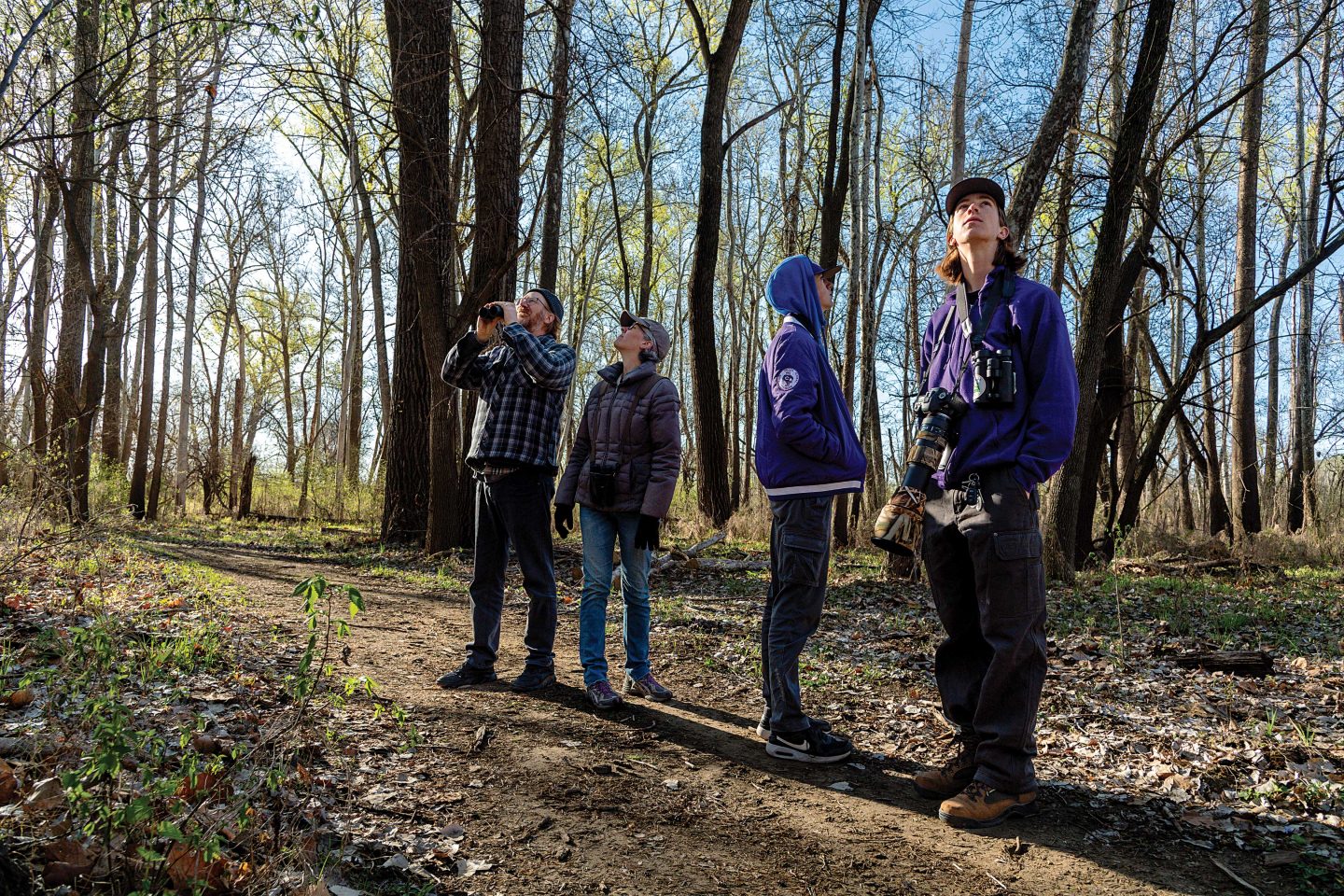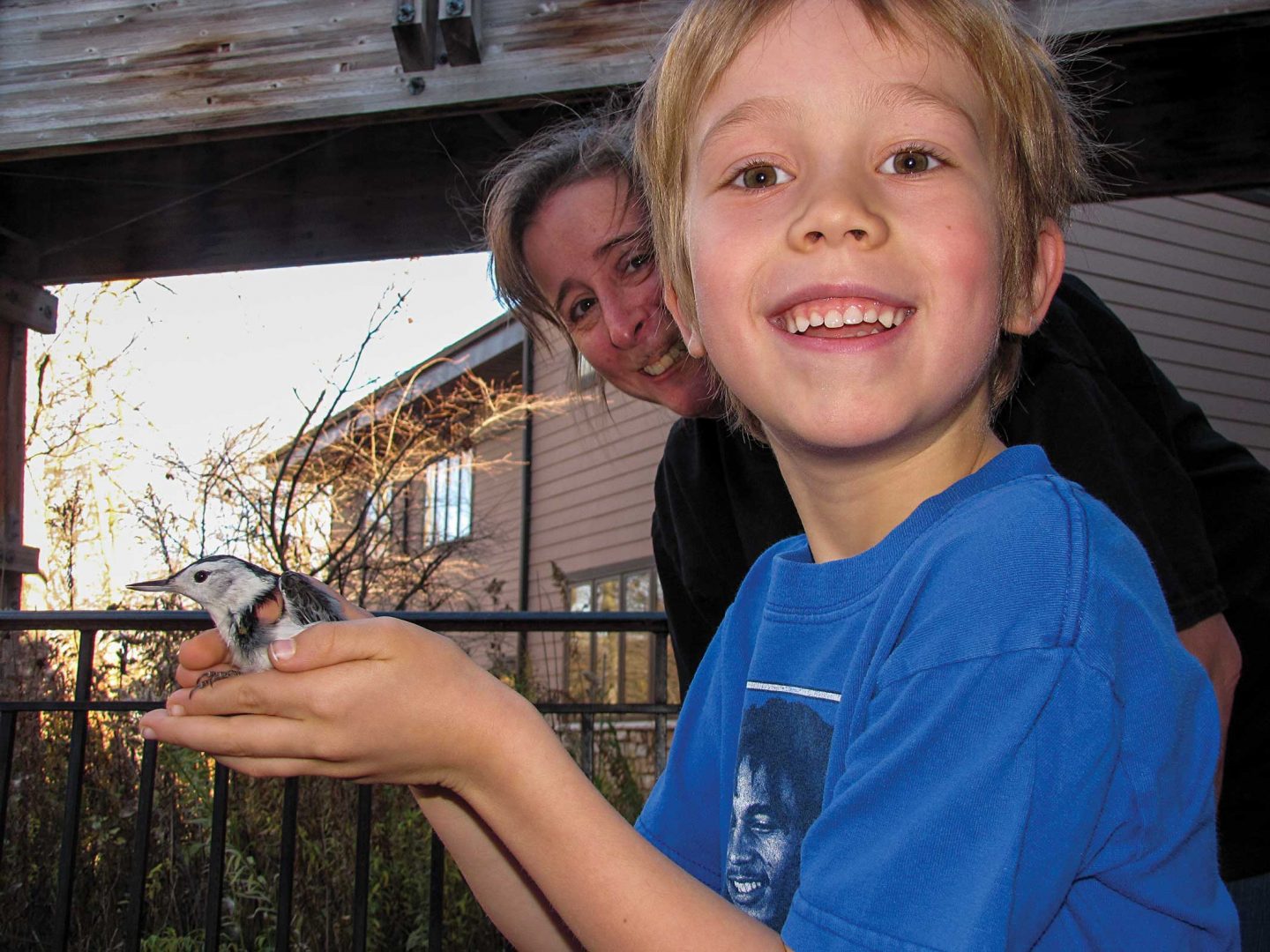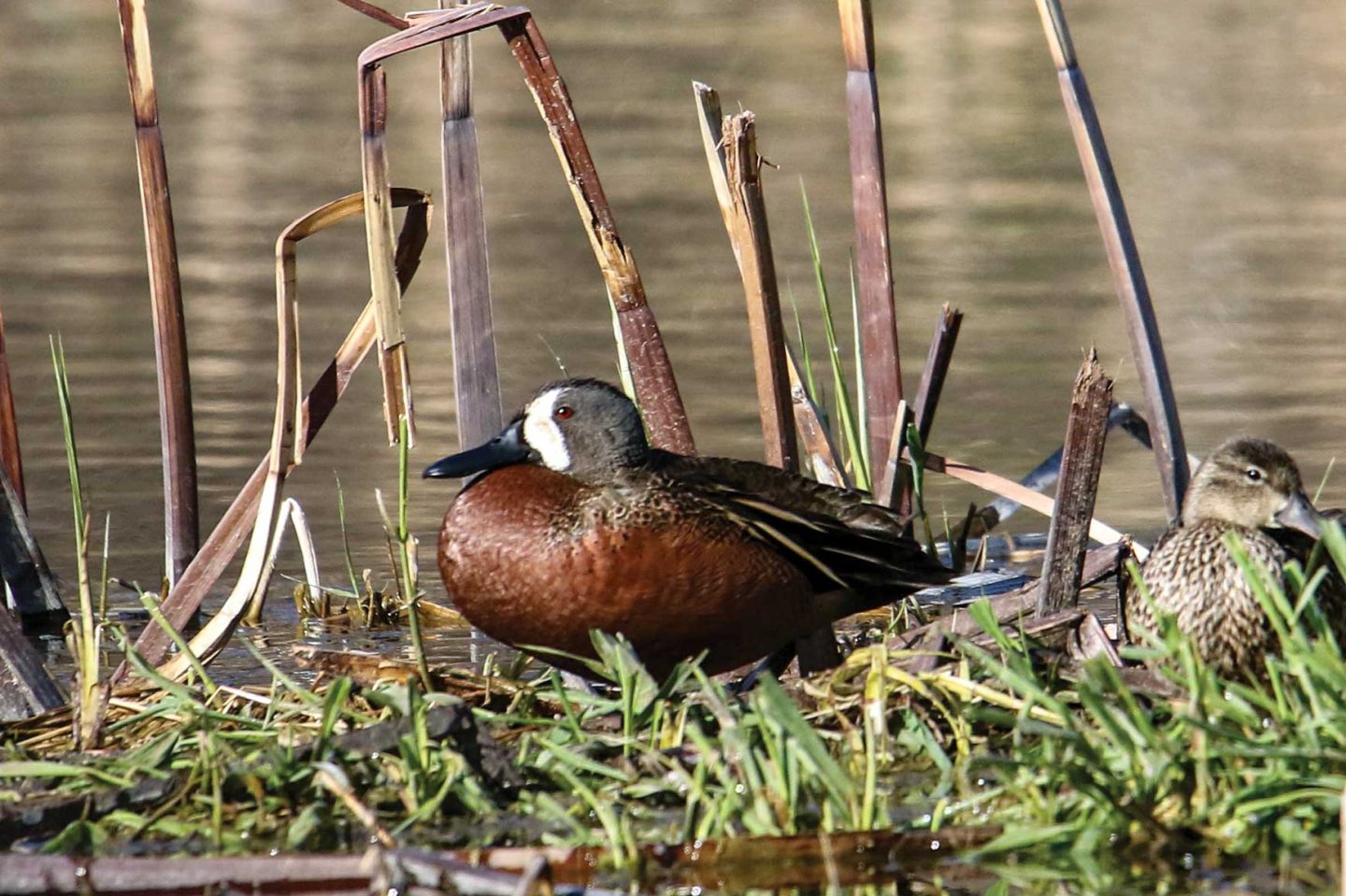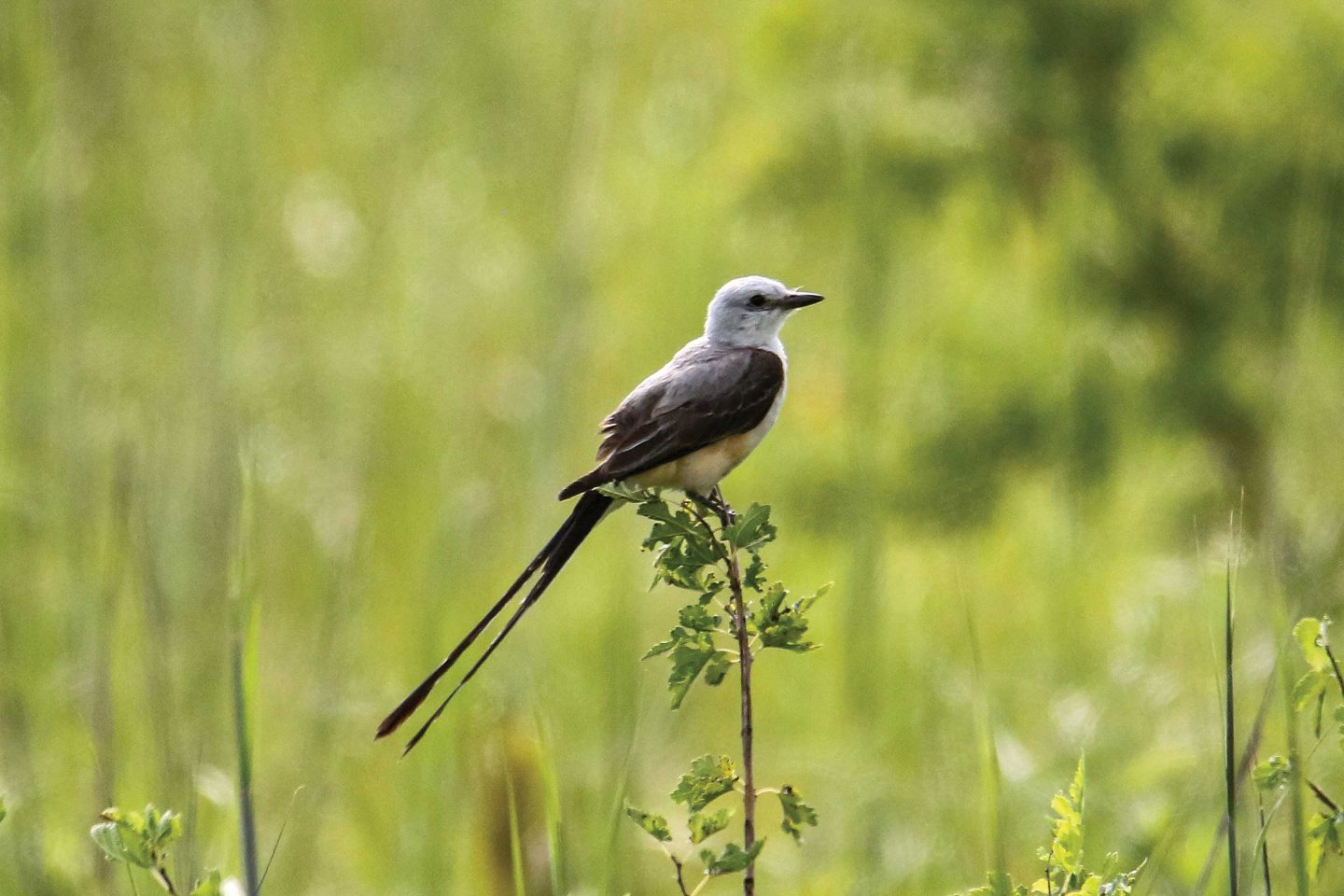
By Eric Fowler
For one Omaha couple, what began with hiking and a birdsong book has led to two high-school-aged boys who can hold their own with some of the top birdwatchers in the state.
Corey and Andi Weber always enjoyed hiking. When their son, Eli, was born in 2006, they received a membership to Fontenelle Forest in Bellevue as a Christmas gift. That led to more hikes with Eli and, two years later, Silas. “We took the boys there ever since they were teeny tiny,” Andi said.
The hikes were simply about being outdoors. Corey grew up in Wisner and had learned to identify the ducks he saw along the Elkhorn River but hadn’t paid much attention to songbirds.
While perusing the clearance rack at a local bookstore, Andi ran across a copy of the Bird Songs Bible, a book with an audio player containing photos and sounds of all 750 breeding birds in North America.
“Eli would just sit and go through it one song at a time,” Andi said.
One day, while sitting on the porch, Eli, who was 5 or 6 years old at the time, exclaimed, “Mom! Chimney swifts.”
When Andi asked what he was talking about, he told her there were chimney swifts flying around the house, and he knew that because of the noise they were making. “I thought, ‘That’s cute.’ And he went inside and got the book and came out and played it and, sure enough, he was spot on,” she said. “That’s when we were like, ‘He’s really into this. Let’s get everybody some binoculars.’”

The family’s interest in birds grew with outings to Fontenelle and other sites around Omaha. More than once, while getting ready for a hike, Silas would wander off to talk to other birders. “Silas was great,” Corey said. “He’d break the ice with anybody else out on the trail.”
Silas’s outgoing personality led to a chance meeting along a trail at Fontenelle in 2018 with Mark and Ed Brogie, brothers from Creighton and Wayne, and two of just seven birders in the state who have checked off more than 400 birds in Nebraska on their life lists. As it turned out, Mark had done his student teaching under Corey’s father at Wisner-Pilger schools. The next day, when they crossed paths again, the Brogies and their party invited the Webers to join them in the woods. “We saw a bunch of stuff we had never seen before,” Andi said, noting a prothonotary warbler was the highlight of the day.
Warblers piqued their interest early on, and they purchased the warbler identification course from the Cornell Lab of Ornithology’s Bird Academy to help them identify subspecies, something that can be tricky with these small, colorful birds that flit among the treetops. Other courses have followed.
The interest in warblers led to a vacation in High Island, Texas, in the spring of 2019. The birdwatching destination boasts the only strip of forest for miles on the Gulf Coast, and it is where millions of neotropical songbirds, including warblers, stop to rest after flying across the Gulf from their wintering grounds farther south. The Webers were among a group of bird-watchers when Silas, 10 at the time, made an impression.

“Silas is up front, sitting down, and he says, ‘There’s a chestnut-sided warbler.’ And I hear someone say, ‘Hey, that little kid’s right,’” Corey recalled.
When the coronavirus pandemic shut the world down in 2020, the Webers did their social distancing in the woods, often twice a day in the spring and fall.
“The pandemic really helped because I barely had any schoolwork, and I was able to go out every day in the spring,” Eli said.
“We were killing it,” Corey said. “We just saw so many birds. It was a great use of time when there wasn’t much else to do.”
The brothers each bring something to the table.
“Eli is the engine room,” Corey said. “He’s got the insatiable appetite for it, and he kind of motivates the rest of us. Silas has outstanding ears and outstanding eyes but takes a little prodding to get going. Once he gets going, he loves it. But sometimes he’s not dying to get up early and come out here. But he’s good. He’s spotted a lot of birds for us.”
Silas’s eyes have made him good at spotting and identifying warblers. Eli is quick to identify many species. “Without Eli, we have a lot of question marks,” Corey said. “We really rely on him like with the sparrows. It’s hard to be conclusive, but that quick, he’s got it.”

“Corey and I, when we’re birding with the kids, we don’t have to work as hard to figure out what stuff is,” Andi added.
The boys sometimes walked to Hanscom Park near their home in midtown Omaha to look for birds, once spotting a Cape May and hooded warbler on the same day. Until recently, they relied on their parents to drive them to birding spots farther from home. Those drives were for searching rare birds reported on eBird, a website and app created by Cornell Lab that allows birders to track and share their sightings. “That’s what really got me into it,” Eli said of eBird.
Their bird identification skills didn’t go unnoticed with birders met during the outings. Colleen Childers of Grand Island and Boni Edwards of North Platte, both accomplished bird-watchers, met the family when they were all among birders gathered to see a limpkin that had stopped in Omaha in 2022. They were so impressed with the boys’ skills and interest that they each gave them one of their old cameras.
Andi was humbled and tried to pay the women, who refused to take anything. “It was like they gave them a quarter for a gumball,” Andi said.
Childers said she and Edwards had both recently upgraded their cameras. “I thought, ‘Oh, man. I bet they’d love to have cameras,’ too because I knew they were big birders. I saw their names on eBird all the time,” Childers said. “It’s no big deal. They just came off as really kind, respectful lovers of nature, and I knew they loved birds. They are such good kids, and they do know their stuff.”
The cameras opened a new world of birding, Eli said, allowing him to document what he’s seen and do research at home to help identify birds. “It’s really useful if you see something you don’t quite know what it is and could be rare for the area,” he said.
He’s also now able to post photos to accompany his sightings on eBird. There had been some who doubted the sightings the boys reported, simply because of their age. “I think a lot of the local birders trust my sightings more than they used to. But still, I’m far from being an expert, and I still make mistakes all the time, but it’s always good to have a little proof.”

Now Childers and Edwards text the Webers whenever they make a trip east to go birding. The family has gotten to know many other birders from the Omaha area as well. “We always run into somebody we know, and they always know who the boys are,” Andi said. “Everyone is just very kind and welcoming to them in the local birding community.”
They’ve stayed in touch with the Brogies, too, and even called Ed when they were visiting Corey’s parents in Wisner on Mother’s Day in 2022 and spotted a cerulean warbler. They kept eyes on the bird, a rare sighting in Nebraska, until Brogie could make the drive from Ponca.
Ed Brogie said he doesn’t see many children who get their start in birding as young as the Webers did, and even fewer who stick with it. “It’s a pretty good deal that a lot of older birders kind of gave them some kudos, so to speak, and boosted their interest,” he said. “They still have good eyesight — they’re good at spotting things — and good hearing. And they’re very enthusiastic, so I really enjoy those kids.”
Eli, now age 18, and Silas, 16, both play baseball for Omaha Central High School, so schedules are full in the spring, leaving Sunday as the day the family often goes birding. They have more time in the fall when songbirds are heading south. In the winter Eli will be looking for horned larks, waterfowl or “any random rarity that shows up,” he said.
Silas’s interest in birds has waned as he focused more on baseball. Not Eli, who is preparing to study wildlife in college later this year and hopes to someday have a career involving birds. He received a scholarship to attend the Nebraska Ornithologists’ Union conference in McCook last fall. Andi went, too, and they birded their way home across southern Nebraska, adding species to their lists. Eli’s list has grown to 334 species, more than half of what is in the Bird Songs Bible, with 262 in Nebraska.
Last summer, Eli attended an American Birding Association Young Birder Camp, spending a week watching birds on and around Delaware Bay in Delaware and New Jersey. On that trip, his life list grew by 26 species, including pelagic birds such as a Cory’s shearwater, a brown booby — rare even for that area — and a curlew sandpiper, a bird native to the other side of the world. “It was really cool to see a bird that wasn’t even supposed to be on this continent,” Eli said.

“Probably the coolest thing for me was getting to meet people my age who are as into birds as I am,” Eli continued. “Before that, it was pretty much just my brother, who has not been that interested in it the last few years, and a few others who have either moved or got disinterested.”
While forming friendships with older birders has been rewarding, it can be hard to relate. “I can’t just hang out with a 40-year-old outside of birding,” Eli said. In hopes of finding others with an interest locally, Eli started a birding club at his school and dubbed it the Central Flyway. “If there were more people my age, it brings a little bit of competitiveness to it … just having someone to compare yourself to, I guess.”
Andi doubts Corey and she would’ve become so interested in birds if it weren’t for the boys. “It was kind of a nice marriage of our love for being outside and hiking and then Eli wanting to be birding on top of that,” she said. That, in turn, has led to other interests, including native plants, mushrooms and foraging.
“I think it was a really good springboard for all of us to really get more interested and more in tune with what was going on around us when we were outside.”
“I just love being outdoors in nature, and it kind of gives me an incentive to get outside,” Eli said following a family outing on the riverbottom last spring at Fontenelle Forest that yielded, among other birds, a northern perula, a migratory warbler more common to the east, and a hybrid cinnamon/blue-winged teal. “It’s almost like treasure hunting, sometimes, because you never know what you will find. A morning in May, there could really be anything. You could have a chance to find something pretty interesting and special.”

Silas agreed, to a point. “But when you don’t find anything it’s frustrating. But then you have like that perula we had today, and it makes it better when you don’t see anything else.”
“If he was guaranteed to go out and see a bunch of stuff, he’d go all the time,” Eli said. “But it’s never guaranteed.”
What is guaranteed? Perhaps a life-long appreciation of nature for two young men that began with family time outdoors and a book.
